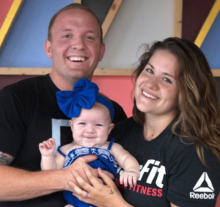Blog
Using Everyday Life as a Training Tool
By Todd Liles • Using Everyday Life as a Training Tool
Yesterday I made a quick trip to Wal-Mart. While in the checkout line, I noticed the cashier looked tired and a little down. When I got to the register I asked her how she was doing and with a forced smile she said, “I’m fine but a little tired.” Sympathetically I said, “I hope you can get some rest, I bet after Halloween it’s pretty busy in here for the rest of the year, right?” With a genuine smile in return she replied, “Yes! Have you worked in the retail business before?” I smiled and nodded, “Yes, I have. I can understand what you’re feeling especially around the holidays, it was always busy but it was also fun.” She laughed and said, “That’s true, time over the holidays seems to fly.”
While this was a simple and very short conversation, I quickly found that just being able and willing to relate to what this lady was feeling was enough to make her feel comfortable talking with me and, hopefully, help make her day better just by having someone care about what she was feeling. It is amazing how small daily situations like these can teach you about what builds rapport and how these skills can relate to customer service in the field. There are three aspects of rapport and relationship building that can be learned from my above scenario:
–Read body language– Before any action is taken to build rapport, you must listen with your eyes. I immediately saw from the cashier’s facial expression and posture that she was tired and unhappy. I knew how she was feeling before I even asked her. Being in-tune with nonverbal communication that comes along with body language can help you begin the conversation and will help continually guide you through the conversation.
–Ask questions (especially questions that show you are genuinely interested in how they feel)- While the cashier’s body language told me almost everything that I needed to know, I asked an open-ended question to see how willing she was to talk with me. In my situations, she blatantly told me how she was feeling but I had to continue using observations to find out why she was feeling this way. I did this by asking a question related to our current situation, I made the assumption that she was tired based on her experience at work. After framing my assumption as a question, I then had to watch for more body language clues to tell me if I was on the right path. When she gave me a genuine smile and further engaged in the conversation then I knew that I was right on target.
–Relate– After she felt that I could relate to her, it made the conversation more comfortable and it even seemed to help put her in a more positive mood. To be able to relate to people in life as well as customers in the field, you must see every situation in your life as a learning experience in which you can glean knowledge and insight. When you see new experiences as a learning opportunities it makes it much easier to find areas in your life that can be relatable to a client’s current situation.
While my experience in the checkout line is a simplistic example of reading body language, asking questions, and relating experiences these are vital skills that can be effectively used when dealing with customers in the field to help build trust, rapport, and make conversing more comfortable. Using these skills in everyday life can help strengthen these skills when they need to be used in the HVAC, plumbing, or electrical field.
-Resource curated by Whitney Stewart of Service Excellence Training.
What SETs Us Apart?
Proactive Business Plans
A proactive business is a successful business. That's why our team takes the time to make sure every client has a proactive, not reactive, business plan. Our strategies make your business run more smoothly and profitable.
Proven Results
Our training services help businesses identify and achieve their key performance indicators (KPIs). Whether it's increased revenue or higher satisfaction rates, our methods allow you to see immediate and continued results.
Personalized Training
Our team of experts works hard to make sure your business gets personalized training. We'll work with your team one-on-one or in group settings to set and achieve your business goals. We develop training based on your goals!
Prioritizing People
We believe that people are the most valuable asset. We strive to provide outstanding benefits, life balance, leadership, and support to our team. We believe in helping people reach their greatest level of growth, contribution and satisfaction.

Trusted By
Business Ignition
SPARK
Classroom Training
Resources
Company

Join our newsletter











